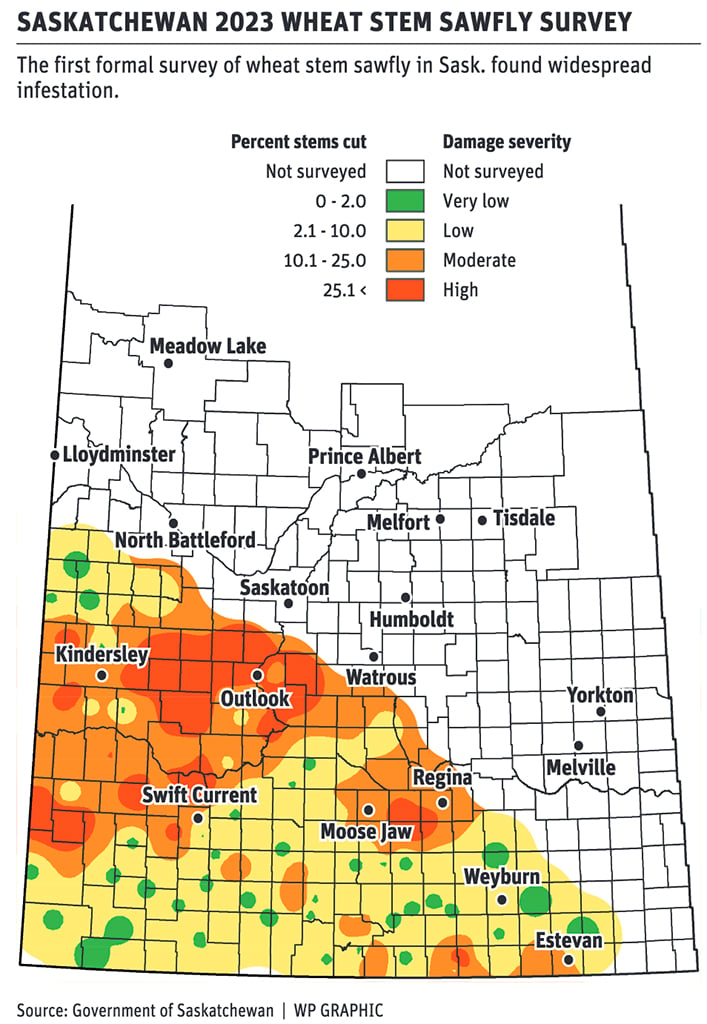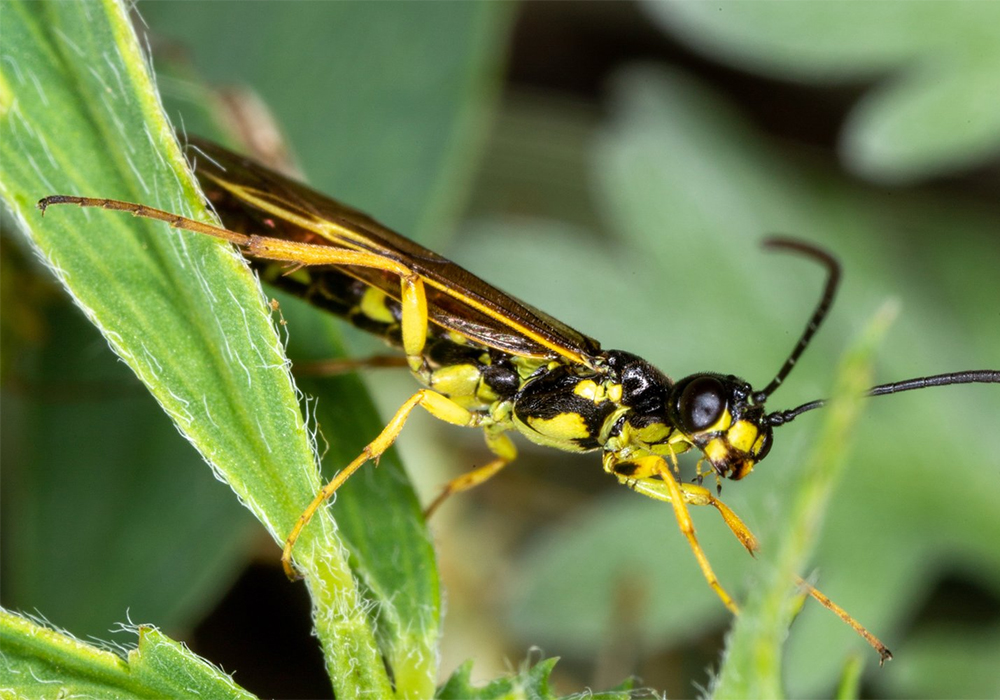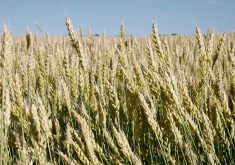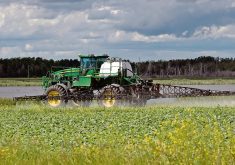Moderate to high levels of cutting from the pest were detected throughout the brown and dark brown soil zones
A free online map that alerts Saskatchewan farmers about the potential threat posed by wheat stem sawflies has been launched in the province.
“A hot spot will show up as red, and then it goes into yellow and greens,” said Blair Goldade, executive director of the Saskatchewan Wheat Development Commission (Sask Wheat). “And the hotter the red in that area, the more likelihood that the conditions are right that the stem sawfly will raise its ugly head, and producers should be aware and on the lookout.”
Other stories on this issue:
The pests attack wheat stems and cut down much of the crop before it can be harvested, he said.
“It can be quite a tremendous impact on yield overall.”
The map was recently launched by Sask Wheat as part of a joint initiative with the Saskatchewan Crop Insurance Corp. and the provincial Ministry of Agriculture. It’s similar to a map produced in Alberta, said Goldade.

The formal survey of wheat stem sawfly in Saskatchewan began this year, said Sask Wheat’s website.
“Moderate to high levels of cutting were detected throughout the brown and dark brown soil zones with particularly high numbers near Moose Jaw and central and east-central regions.”
Goldade likened the prevalence of the pest to the ups and downs of a roller coaster.
“In years where it’s dry, it seems to be worse than in years when it isn’t, and it certainly has been raising its ugly head in the last few years. It’s seen an increase in Alberta over the last couple of years, and it’s infiltrating in Saskatchewan again on a bit of a higher level.”
The insects can add insult to injury during droughts by deepening the damage, said Goldade.
An important aspect of the lifecycle of the pest is its prevalence in fields when conditions are suited for the larvae to hatch, he said.
“It’s certainly one of those pests that carries over from year to year, and drier conditions (are) when it’s able to do the most damage.”
Goldade said the map will be created each year in the fall following a survey. It will better inform farmers about when to implement different strategies to fight the insects, such as selecting varieties of wheat more resistant to sawflies.
The insects can be prevented from laying eggs in stems that are more solid, he said.
“There are varieties that have both semi solid and solid stems, but not to the level of the number of varieties that we would like producers to have in their toolbox.”
However, plant breeders are making significant progress on the problem, said Goldade. Depending on the class of wheat, different numbers of varieties are becoming available to counteract wheat stem sawflies, he said.
Sawflies can also affect winter wheat, but usually do so to a lesser extent than they do in spring wheat, he said.
Visit saskwheat.ca/wheat-stem-sawfly-resources to view the map.
















